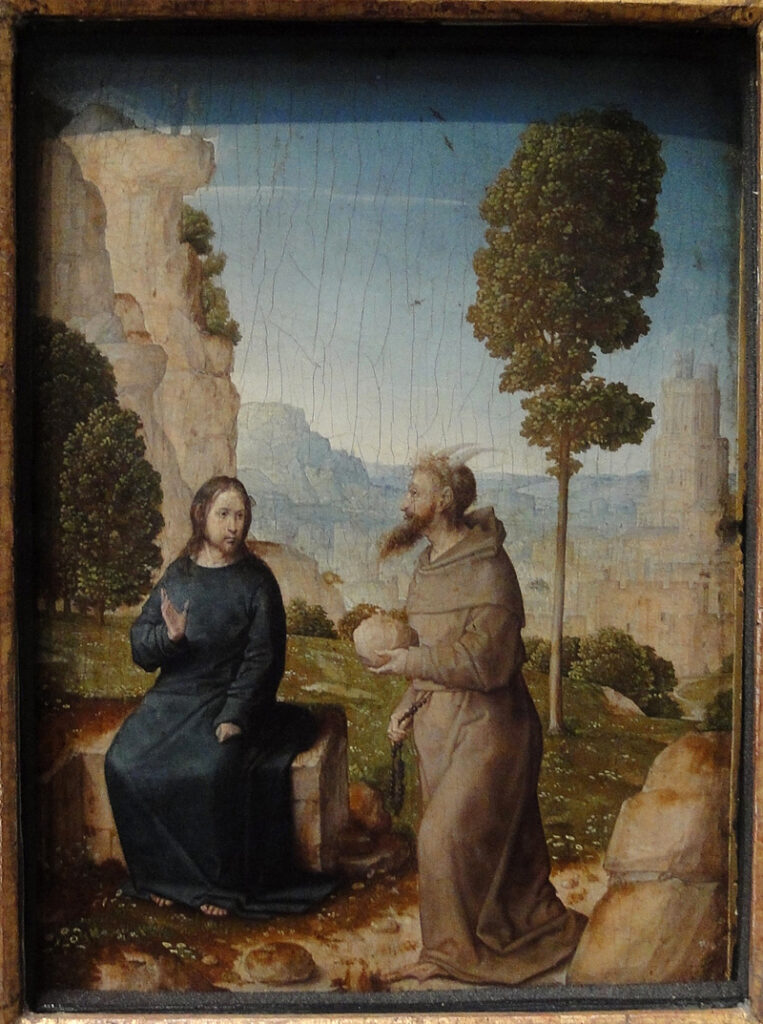First Sunday in Lent
READINGS FOR THE COMING WEEK
- First reading
- Genesis 2:15-17; 3:1-7
- Psalm
- Psalm 32
- Second reading
- Romans 5:12-19
- Gospel
- Matthew 4:1-11
The gospel from Matthew:
Jesus was led up by the Spirit into the wilderness to be tempted by the devil. He fasted forty days and forty nights, and afterwards he was famished. The tempter came and said to him, “If you are the Son of God, command these stones to become loaves of bread.” But he answered, “It is written, ‘One does not live by bread alone, but by every word that comes from the mouth of God.'”

ca. 1500 Juan, de Flandes,
National Gallery of Art (U.S.)
Washington, DC
https://diglib.library.vanderbilt.edu
Then the devil took him to the holy city and placed him on the pinnacle of the temple, saying to him, “If you are the Son of God, throw yourself down; for it is written, ‘He will command his angels concerning you,’ and ‘On their hands they will bear you up, so that you will not dash your foot against a stone.'” Jesus said to him, “Again it is written, ‘Do not put the Lord your God to the test.'”
Again, the devil took him to a very high mountain and showed him all the kingdoms of the world and their splendor; and he said to him, “All these I will give you, if you will fall down and worship me.” Jesus said to him, “Away with you, Satan! for it is written, ‘Worship the Lord your God, and serve only him.'”4Then the devil left him, and suddenly angels came and waited on him.
Notes:
In 1475, the Dominican practice of the rosary was revived in Germany and quickly became widespread among Dominicans, Benedictines, and Carthusians. Pope Sixtus IV, a Franciscan who served from 1472-1484, also encouraged the practice through papal bulls and indulgences.
The devil in Juan de Flandes’ painting wears clerical garb and carries rosary beads, a clear contemporary reference to the new rosary practices, which carried with them the promise of remission of punishment for confessed sins through indulgences. This fashioning of the devil as an active, practicing cleric was a popular motif in Temptation-themed art of the period. What it signifies is less clear; does the rosary indicate that, with Mary’s intercession and Christ’s grace, even the devil can be saved? Or is it a less benign fashioning, indicating that the devil is very clever and can disguise himself in the garb of the faithful?
Another interpretation of this painting is also possible, and perhaps dually present. Some scholars saw a parallel in the New Testament text of Jesus’ temptation with Moses’ visits to Mount Sinai, which lasted 40 days. Jesus’ time in the Wilderness is also a parallel to the Israelite’s wanderings, per the 40 years and the appearance of bread/manna. Note the horns on the head of the figure of the devil — horns were a sign for Moses, as indicated in the Vulgate version of the Old Testament story, Exodus 34:29-35.

